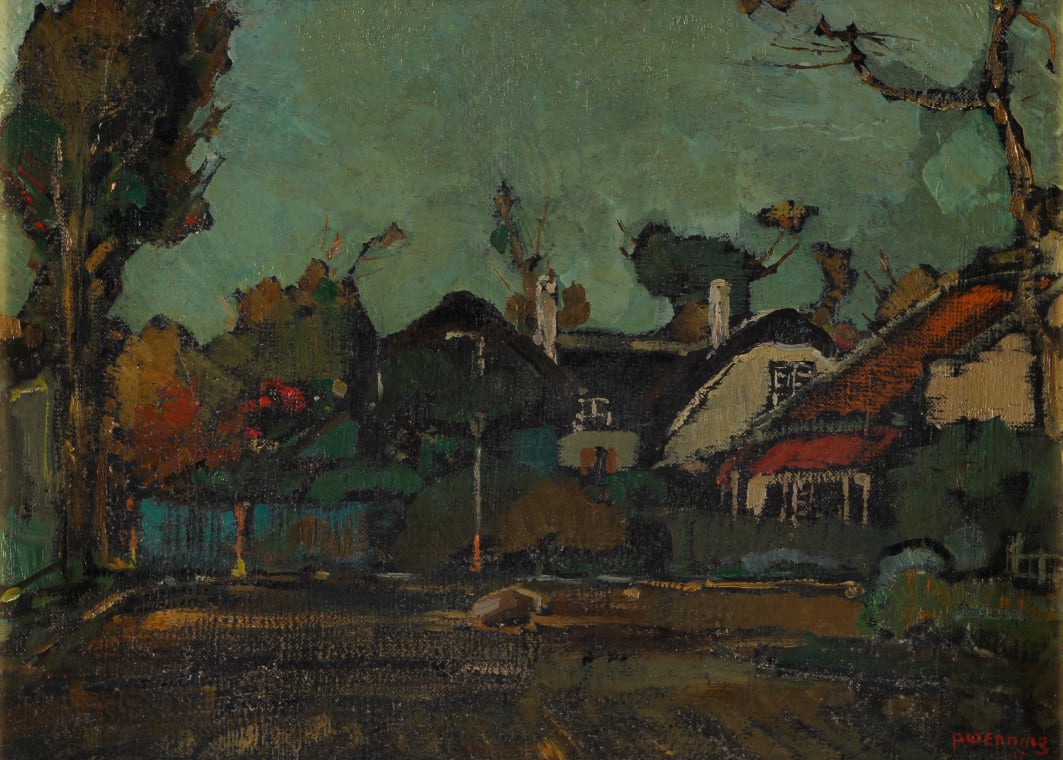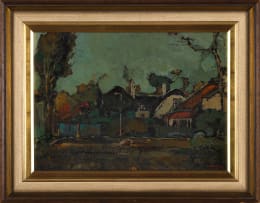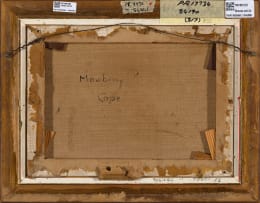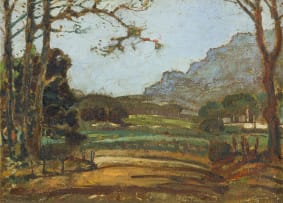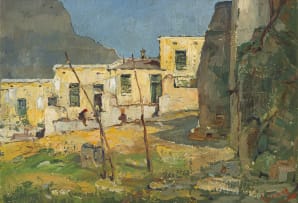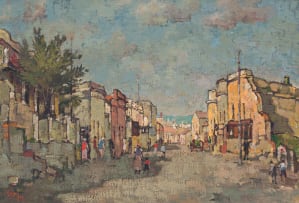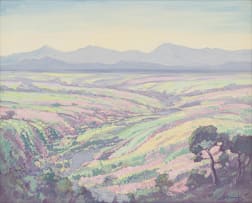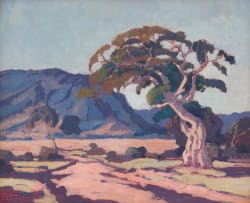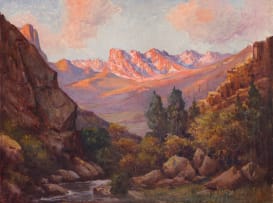Evening Sale
Live Virtual Auction, 17 September 2024
Evening Sale: Modern and Contemporary Art
Incl. Buyer's Premium & VAT
About this Item
signed and dated 17; inscribed with 'Mowbray, Cape' on the reverse
Provenance
Strauss & Co, Cape Town, 26 September 2011, lot 258.
Strauss & Co, Johannesburg, 14 September 2021, lot 39.
Literature
J du P Scholtz (1973) DC Boonzaier en Pieter Wenning: Verslag van 'n Vriendskap, Cape Town: Tafelberg, listed as no. 30 and illustrated in black and white on page 102.
Notes
After attempting to capture the harsh, clear and bright sunlight of the Highveld, Pieter Wenning relocated to the moderate climes of the Mediterranean-like Western Cape, where the sombre, misty skies and lead-grey clouds suited him better and where he produced many of his most successful works. He was often seen roaming the neighbourhoods in Cape Town's southern suburbs - Observatory, Mowbray, Newlands, Claremont, Plumstead, and Bishopscourt - with sketchbook in hand, making quick drawings of captivating scenes and buildings. He soon, however, discarded the sketchbook for working en plein air, directly on canvas, with paint box readily at hand. DC Boonzaier (Gregoire's father) notes in his diary that on 9 July 1916 - a Sunday afternoon - Wenning went to Mowbray to paint an old Dutch house and returned to the scene the following Sunday morning to continue working on the painting. The imposing structure of the building, with its rich, silky moss-covered thatched roof and its mouldy weatherworn walls embraced by ancient windswept trees, made a deep impression on Wenning, who revelled in capturing the evocative scene in muted grey, green and brown tones and impressing the viewer with serene harmonies of composition and colour. The Northern European impressionism of the Hague School of artists, especially George Breitner, Jozef Israels, the Maris brothers and Anton Mauve, made way for splendid Southern impressionism.
